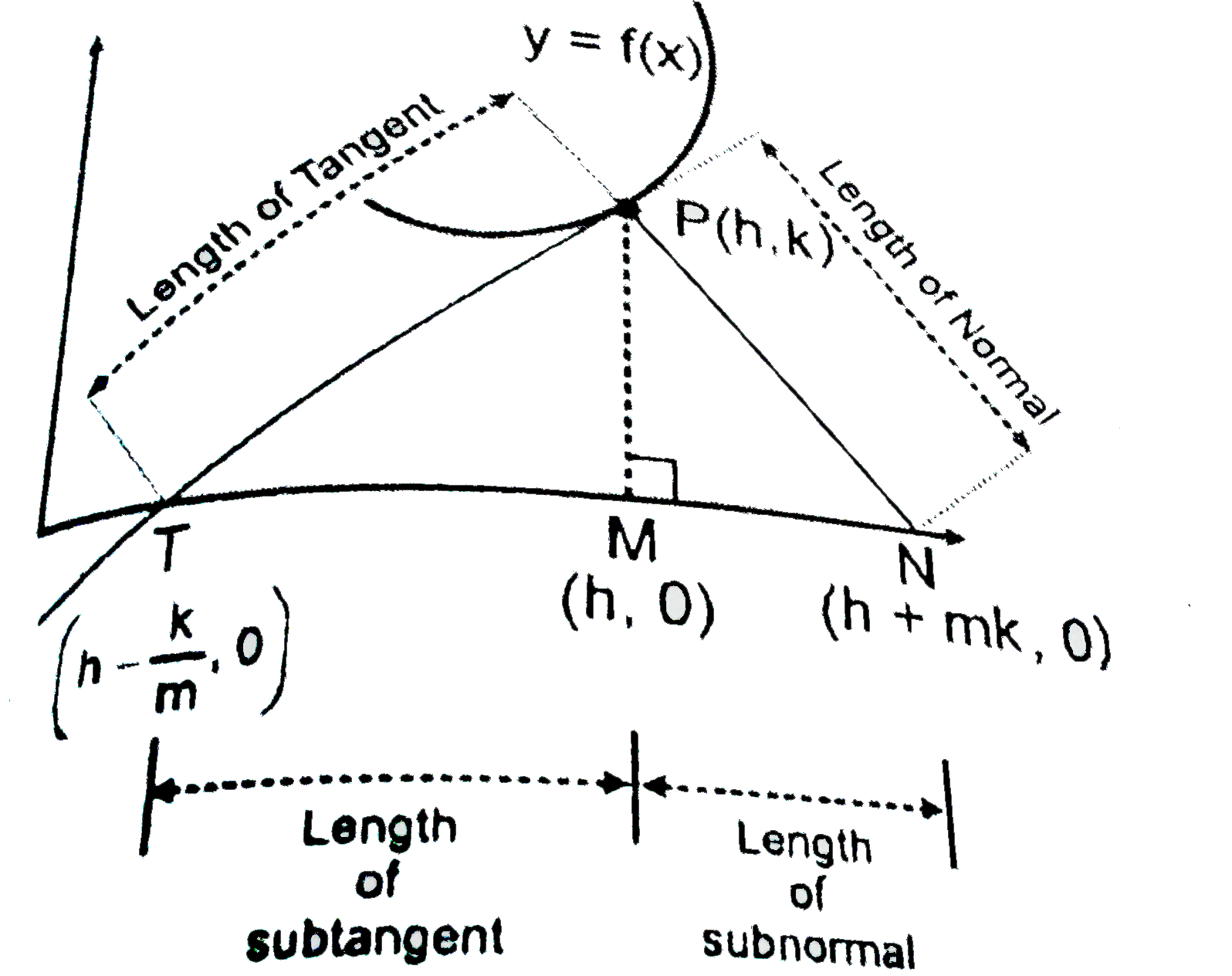Determine p such that the length of the sub-tangent and sub-normal is equal for the curve y=epx+px at the point (0,1).
To determine the value of p such that the lengths of the sub-tangent and sub-normal are equal for the curve y=epx+px at the point (0,1), we will follow these steps:
Step 1: Find the derivative dydx
Given the curve:
y=epx+px
We differentiate y with respect to x:
dydx=ddx(epx)+ddx(px)
Using the chain rule and basic differentiation:
dydx=pepx+p
Step 2: Evaluate dydx at the point (0,1)
Now we substitute x=0 into the derivative:
dydx∣∣∣(0,1)=pep⋅0+p=p⋅1+p=2p
Step 3: Set up the relationship between sub-tangent and sub-normal
The length of the sub-tangent LT and the length of the sub-normal LN are given by:
LT=y⋅dxdy
LN=y⋅dydx
Since we want LT=LN:
y⋅dxdy=y⋅dydx
Dividing both sides by y (since y≠0):
dxdy=dydx
Step 4: Rewrite the equation
We can rewrite this as:
dxdy=1dydx
Thus,
1dydx=dydx
Cross-multiplying gives:
1=(dydx)2
Step 5: Substitute dydx and solve for p
We know from Step 2 that:
dydx=2p
Substituting this into the equation:
1=(2p)2
This simplifies to:
1=4p2
Dividing both sides by 4:
p2=14
Taking the square root of both sides:
p=±12
Final Answer
Thus, the values of p are:
p=12orp=−12
---
y=epx+px
dydx=ddx(epx)+ddx(px)
dydx=pepx+p
dydx∣∣∣(0,1)=pep⋅0+p=p⋅1+p=2p
LT=y⋅dxdy
LN=y⋅dydx
y⋅dxdy=y⋅dydx
dxdy=dydx
dxdy=1dydx
1dydx=dydx
1=(dydx)2
dydx=2p
1=(2p)2
1=4p2
p2=14
p=±12
p=12orp=−12
Similar Questions
Determine p such that the length of the such-tangent and sub-normal is equal for the curve y=epx+px at the point (0,1).
View SolutionLet P (h,K) be any point on curve y=f(x). Let tangent drawn at point P meets x-axis at T & normal at point P meets x-axis at N (as shown in figure) and m =dydx](h,k)) = shope of tangent.

(i) Length of tangent =PT =|K|√1+1m2
(ii) Length of Normal =PN +|K|√1+m2
(iii) Length subtangent = Projection of segment PT on x-axis =TM=∣∣∣km∣∣∣
(iv) Length of subnormal =Projection of line segment PN on x-axis =MN =|Km|
Determine 'p' such that the length of the subtangent and subnormal is equal for the curve y=epx+px at the point (0,1)
View SolutionFind the length of sub-tangent to the curve y=ex/a
View SolutionFind the length of the tangent for the curve y=x3+3x2+4x−1 at point x=0.
View SolutionFind the length of the tangent for the curve y=x3+3x2+4x−1 at point x=0.
View SolutionThe length of the Sub tangent at (2,2) to the curve x5=2y4 is
View SolutionThe curve y=f(x) in the first quadrant is such that the y - intercept of the tangent drawn at any point P is equal to twice the ordinate of P If y=f(x) passes through Q(2,3), then the equation of the curve is
View SolutionIf the length of sub-normal is equal to the length of sub-tangent at any point (3,4) on the curve y=f(x) and the tangent at (3,4) to y=f(x) meets the coordinate axes at AandB , then the maximum area of the triangle OAB, where O is origin, is 45/2 (b) 49/2 (c) 25/2 (d) 81/2
View SolutionIf the length of sub-normal is equal to the length of sub-tangent at any point (3,4) on the curve y=f(x) and the tangent at (3,4) to y=f(x) meets the coordinate axes at AandB , then the maximum area of the triangle OAB, where O is origin, is 45/2 (b) 49/2 (c) 25/2 (d) 81/2
View SolutionTangent and normal at any point P of the parabola y2=4ax(a>0) meet the x-axis at T and N respectively. If the lengths of sub-tangent and sub-normal at this point are equal, then the area of ΔPTN is given by
View Solution
